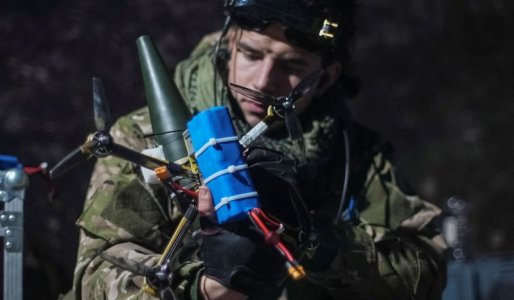bobcat
Well-known Member
- Location
- Northern Calif
Evolving drone technology has exposed a vulnerability that's hard to defend against. An example can be found in the Russia / Ukraine war. About a hundred or so drones are released at once, and they use visual recognition and mapping AI to find their target, so radar jamming doesn't work, and in mass swarms, trying to shoot them down at night is very problematic because detection is difficult and defenses are overwhelmed.
Ukraine’s drone production has exploded, with more than 500 private firms now manufacturing roughly 200 000 small units per month. By the end of 2025, officials expect to field 30,000 long-range drones as well. This industrial scale is reshaping the conflict. What began as small-unit experimentation has become a national enterprise, shifting the balance from conventional firepower toward swarms of cheap, smart, and expendable weapons.
They just zip tie an explosive device onto a combat drone and send it on the kamikaze mission. It is crippling air travel as flights are grounded, and air raid sirens are going off at night in Moscow forcing citizens to find shelters, thus disrupting sleep, and if the drone is shot down, it comes down in flames and starts fires all over the city. It's like guerilla warfare in the skies. It may be a game changer for warfare, wherever it is.

Ukraine’s drone production has exploded, with more than 500 private firms now manufacturing roughly 200 000 small units per month. By the end of 2025, officials expect to field 30,000 long-range drones as well. This industrial scale is reshaping the conflict. What began as small-unit experimentation has become a national enterprise, shifting the balance from conventional firepower toward swarms of cheap, smart, and expendable weapons.
They just zip tie an explosive device onto a combat drone and send it on the kamikaze mission. It is crippling air travel as flights are grounded, and air raid sirens are going off at night in Moscow forcing citizens to find shelters, thus disrupting sleep, and if the drone is shot down, it comes down in flames and starts fires all over the city. It's like guerilla warfare in the skies. It may be a game changer for warfare, wherever it is.


